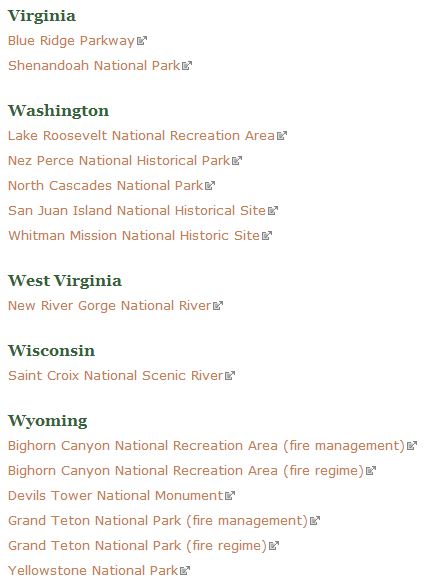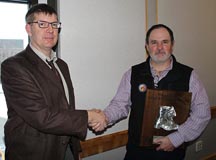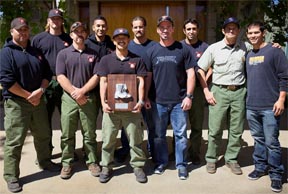Idaho sues over Steep Corner Fire
The state of Idaho has filed a lawsuit to recover the costs they incurred while suppressing the 2012 Steep Corner Fire near Orofino, Idaho. The suit claims that a timber company and its contractor did not meet U.S. Forest Service standards. It names Potlatch Land and Lumber, Potlatch Forest Holdings, Clearwater Paper Corp., Potlatch Corp., and DABCO Inc., a Kamiah-based logging contractor.
A firefighter, Ann Veseth, in her second season working as a firefighter for the USFS, was killed when she was struck by a falling 150-foot tall fire-weakened green cedar tree. The tree fell on its own and was 13 inches in diameter where it struck her.
Nebraska to join a fire compact
If the governor of Nebraska signs a bill approved by the legislature, the state will become a member of the Great Plains Interstate Compact, making it easier to share firefighting resources with Colorado, Wyoming and the Dakotas.
UPDATE, April 18, 2014. Gov. Dave Heineman announced that he signed the bill.
Next-generation 911
The next generation of 911 could include live video and photographs which could be sent to first responders.
From Governing.com:
On May 1, 2010, a terrorist attack in New York City’s Times Square was thwarted when street vendors noticed smoke coming from a vehicle in which a homemade bomb had failed to explode. Imagine if those street vendors could have used their cellphones to send pictures or video of the vehicle and its license plate to a 911 call center. What if the 911 center could then push that data to first responders and police to get the location from GIS and buildings visual in the photos?
“They could really capture the dynamics of the event,” said Brian Fontes, executive director of the National Emergency Number Association (NENA). “That is what I call an information-rich 911 call, which will be supported in a next-generation 911 system…
Wildfire activity in British Columbia
From cbc.ca:
Fire officials are keeping a close eye on wildfires in the interior. There have been twice the average number of fires so far this year in the Kamloops Fire centre. Monday, five homes were put on evacuation alert in Bridge River near Lillooet. Nearly two dozen firefighters were sent to the area. Two fires are also being fought in the Okanagan. Kayla Pepper is an information officer with the Kamloops Fire Centre. She says it is dry and there has been a fair amount of wind throughout the Interior and Okanagan. She says there have already been 34 wildfires in the region. Pepper says so far, it’s too early to predict how active wildfires will be this year.
National Parks with web pages devoted to wildland fire
The National Park Service has a web page that lists dozens of Parks that have web pages devoted to their unique wildland fire programs. Below is a screen shot of a portion of the page.






